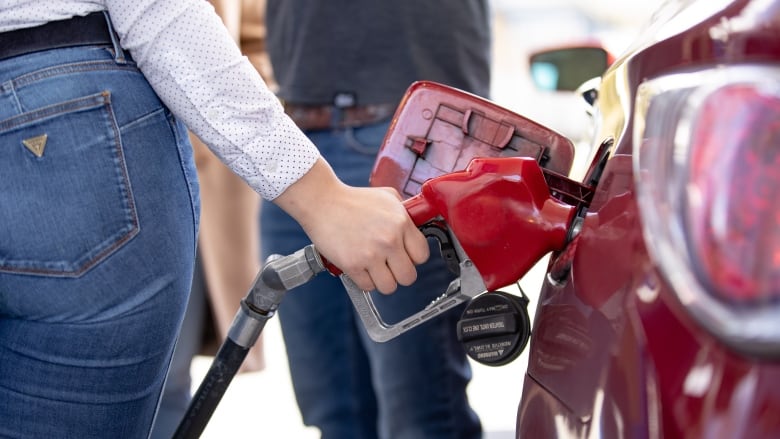The price of gas continues to go up in Canada and, in some regions, is breaking records.

The price of gas continues to go up in Canada and, in some regions, is breaking records.
The two-day average price at the pump per litre has gone up in Ontario, Quebec, New Brunswick, Nova Scotia and P.E.I., according to the Canadian Automobile Association (CAA).
The average price in Canada is $1.478 per litre, as listed on gas price tracker website GasBuddy.
Experts say geopolitical tensions are behind the recent increases, and that 2022 will see even higher costs.
Tensions between Russia and Ukraine have “the market on its edge as gasoline and crude product stocks are quite low,” said Al Salazar, vice-president of intelligence at energy analytics firm Enverus.
“Any type of outage would really send prices soaring if the geopolitical tensions boil over, which obviously ripples to gasoline. I don’t think anyone is immune to these price rises in gasoline.”
Russia supplies much oil and gas to the rest of the world — a supply that could be cut off if tensions escalate.
Analysts say energy markets are already looking at the tensions as a very serious risk, “and therefore prices are moving higher,” said Dan McTeague president of the advocacy group Canadians for Affordable Energy.
He said gas prices in the Toronto area hit record highs this week — passing the record of $1.499 per litre set on Nov. 4 of last year to hit almost $1.52 per litre.
In Quebec, the average price per litre is up 2.9 cents from last week, now sitting at about $1.546. Gassing up in Nova Scotia has also gone up compared to last week, from $1.45 to $1.467 a litre, on average.
“We’re into new territory,” McTeague said.
“I think we’re marching to $1.65 for an average price of gasoline in Canada.”

Higher gas prices for 2022
While there are many factors that determine the price of retail gasoline, the price of oil is the biggest.
Oil prices took a huge hit in the early months of the COVID-19 pandemic, as travel slowed to a crawl, factories closed and the world economy effectively went into hibernation.
As demand crept back, so did prices. After dipping below zero barely a year ago, crude prices are now back to their highest level in seven years.
Salazar says one reason why the price is going up now — in addition to geopolitical issues — is because, last year, crude and product inventories in the U.S. in particular were depleted.
Depleted inventories mean there are few shock absorbers to deal with any unexpected interruptions in output or stronger than anticipated growth in consumption.
“The less buffer you have in terms of inventories, that means that prices are higher,” he said.
And those higher costs come when consumers are also dealing with other strains on their wallets like higher food prices and an increase in natural gas costs.
But there is some slightly good news. Salazar says there may be a slight reprieve in gas prices in the next few months.
“We think the prices will subside and the fact that a little bit of a reprieve from where we are because certainly what we’re seeing right now is quite extraordinary,” he said.

